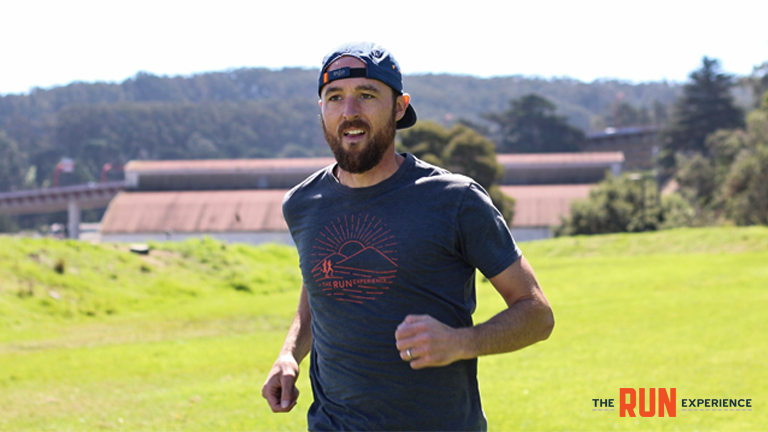8-Week Running Plan for Beginners
Whether you want to start an 8-week running plan for beginners for weight loss or your first 5k, we'll help you make it happen.

Whether you want to start a running program for weight loss or have the goal to run your first 5k or ultimately a half marathon, an 8-week running plan for beginners is a great way to reach your health and fitness goals.
In this article, we’ll dive into an 8-week beginner training plan to get you in shape and feeling great.
8-Week Running Plan for Beginners
For a beginner runner without any experience, a good goal is to be able to run for 30 minutes without stopping at a steady, relaxed pace. If you’ve never run before, that might seem like a lot, but don’t worry. Each week it will get easier and you’ll feel stronger than the week before.
Training-tip: If you’re more than 20 pounds overweight, have a heart condition, or any underlying issues of concern, talk with your doctor before you embark on a running plan. They can help you with weight loss tips, ways to reduce your risk of injury, review your medications, and give you the go-ahead to start exercising and lace up those running shoes.

Week One
As new runners, you’ll start slow with a walk-run approach. Warm-up by walking for a few minutes to loosen up your legs. Then you’ll jog for one minute, followed by walking for two minutes. Repeat 10 times for a total of 10 minutes of running and 20 minutes of walking. Do this workout three times outside, on a treadmill, or a track during the week.
If you want, you can walk or add in some low impact cross-training or strength-training on one of your off days, such as swimming, pilates, or yoga.
Week Two
Once you’re warmed up, start with running for two minutes and walking for one minute for a total of 30 minutes On your second run, try running three minutes and walking for a minute and 30 seconds. Finally, on your third run of the week, try running for four minutes and walking for two. Adjust as needed depending on how you feel.
If four minutes feels too hard, slow down your pace, or add in more walking time. It’s your training plan, and everyone is different!
Week Three
Running for three minutes should seem pretty realistic at this point, so it’s time to start pushing a little longer. If you can’t seem to finish the allotted number of minutes of running, slow down your pace a bit. On the first day, run for three minutes and walk for one minute for 30 minutes. On the second run, up the running to four minutes with one minute of walking.
For your final run of the week, run five minutes and walk for one minute and 30 seconds. If you need to swap in a couple of four-minute rounds, that’s ok. Each run should total 30 minutes.
Week Four
Your body should be getting used to running by now, so we’ll amp it up a bit. On the first run of the week, run for four minutes and walk for one minute. On the second run, run for six minutes and walk for one minute.
For the last run, challenge yourself and try running for eight minutes, then walking for two. If you need to add in a couple of shorter segments, listen to your body and adjust.

Week Five
You’re over the halfway mark! In just a few weeks, you should be running 30 minutes consistently with no problem. For the first run, jog for five minutes and rest for 30 seconds and one minute alternatively between running segments. Your second run will involve running for seven minutes and alternating walking 30 seconds and one minute between runs.
For the final run of the week, challenge yourself with a ten-minute run. Don’t go crazy–keep your heart rate under control at a conversational pace where you can still talk and breathe at the same time. Follow that with two minutes of walking, then two five minute runs with one minute in between.
Training tip: It’s important to eat healthy when starting any new training program. Focus on getting two to three servings of fruits and vegetables daily, lean protein, and whole grains. Plus, don’t forget to hydrate and drink plenty of water to replace the fluid you lose while sweating.
Week Six
By this point in the beginners’ running plan, running should feel pretty natural by now. We’ll run four days this week. Start your week by running seven minutes and walking for 30 seconds. Do that twice, then run eight minutes with a 30-second break in between twice.
On the second workout, run for nine minutes with a one-minute break in between. Repeat three times. The third run will be an easier day to get you ready for your 4th workout. Just run four minutes with a 30-second walk break in between for 30 minutes.
Your final run will consist of running for twelve minutes with a minute and a half break in-between. Then, run for five minutes with a one minute break, then run 12 minutes again.
Week Seven
You’re almost there! On the first day, run 10 minutes with a one minute break in between three times. For your second workout, run 12 minutes with a one minute break in between three times. Bring in an easy day of a five-minute run/one-minute walk for the third workout.
On your last workout for the week, you’re prepping yourself for that 30-minute run. Run for 15 minutes, then walk for one to two minutes. Then run another 15 minutes. Cool-down by walking for a few minutes.
Week Eight

Progress Tracking and Adjustments
Tracking Your Progress
Monitoring your progress is essential to stay motivated and achieve your running goals. Here are several methods to help you keep track of your achievements and improvements:
Running Apps
- Benefits: Running apps can track your distance, pace, time, and even the route you take. They often provide data analytics to help you see trends in your performance.
- Popular options: Apps like Strava, Nike Run Club, MapMyRun, and The Run Experience app offer features to track your runs, set goals, and connect with other runners.
Running Journal
- Benefits: Keeping a running journal allows you to record more personal insights about your runs, such as how you felt, weather conditions, and any issues you encountered.
- How to start: Write down details after each run, including the date, distance, time, route, and how you felt physically and mentally. Over time, you’ll be able to see your progress and identify patterns.
Setting Milestones
- Benefits: Milestones provide tangible goals to work towards and help maintain motivation.
- Examples: Milestones can include running a certain distance without stopping, achieving a new personal best time, or completing a specific number of runs in a month. Celebrate each milestone to acknowledge your hard work and progress.
Making Adjustments
As you follow your training plan, you might find that your progress is either faster or slower than expected. Additionally, you may encounter obstacles such as injuries or schedule conflicts. Here’s how to make necessary adjustments:
If Progress is Faster Than Expected
- Increase intensity gradually: If you find the plan too easy, you can increase the intensity or duration of your runs slightly. However, avoid making drastic changes to prevent injury.
- Incorporate more advanced techniques: Add elements like interval training, tempo runs, or hill workouts to challenge yourself further.
If Progress is Slower Than Expected
- Review your plan: Check if you’re following the plan correctly and consistently. Sometimes, small adjustments to your routine can make a big difference.
- Slow down your pace: If you’re struggling to keep up, it’s okay to slow down your running pace. The goal is to build endurance and strength gradually.
- Repeat weeks: Don’t be afraid to repeat a week in your training plan if you feel you need more time to adapt to the current level.
Dealing with Injuries or Obstacles
- Listen to your body: If you experience pain or discomfort, take it seriously. Rest and seek professional advice if needed. Continuing to run through pain can lead to more serious injuries.
- Modify your training: If an injury prevents you from running, consider cross-training activities like swimming, cycling, or using an elliptical machine to maintain your fitness without putting stress on the injured area.
- Adjust your schedule: Life events and busy schedules can interfere with your training. If you miss a workout, don’t stress. Adjust your plan to fit your availability, but try to maintain consistency as much as possible.
Advanced Tips and Next Steps
Speed Work and Interval Training
As you become more comfortable with your running routine, incorporating advanced techniques like speed work and interval training can help you push your limits and improve your performance.
Interval Training
- What is it? Interval training involves alternating between periods of high-intensity running and lower-intensity recovery or walking. This technique helps improve your speed and cardiovascular fitness.
- How to start: Begin with a simple routine, such as running at a fast pace for 1 minute followed by 2 minutes of walking or jogging. Repeat this cycle for 20-30 minutes. Gradually increase the duration of the high-intensity intervals as your fitness improves.
Tempo Runs
- What are they? Tempo runs are sustained efforts at a challenging but manageable pace, typically faster than your usual running pace but not as fast as a sprint. These runs help improve your lactate threshold, allowing you to run faster for longer periods.
- How to start: Warm up with an easy jog for 10 minutes, then run at a comfortably hard pace for 15-20 minutes, and cool down with another 10-minute jog. As you progress, increase the duration of the tempo portion.
Put Your 8-Week Running Plan into Action
You made it! All you have to do is remove that one to two-minute walk in between your 15-minute running segments from your last workout. You’ve put in the work and now it’s mind over matter to get through 30 minutes of continuous running. You’ve got this!
Whether you’re trying to lose weight or finish your first 5K, you have the foundation you need to go and chase your goals.
Now that you’ve completed this 8-week running plan for beginners and can run for 30 minutes, are you ready to develop a training plan that brings your running to the next level? Whether you’re getting ready for an upcoming race, trying to get in better shape, or looking finally lose those extra pounds, The Run Experience has tons of resources for you.
Have you downloaded our new mobile app? It’s loaded with workouts, videos, tips, and advice from expert coaches to keep you motivated every step of the way. Don’t forget to check out our range of training plans for runners of all levels, too!
